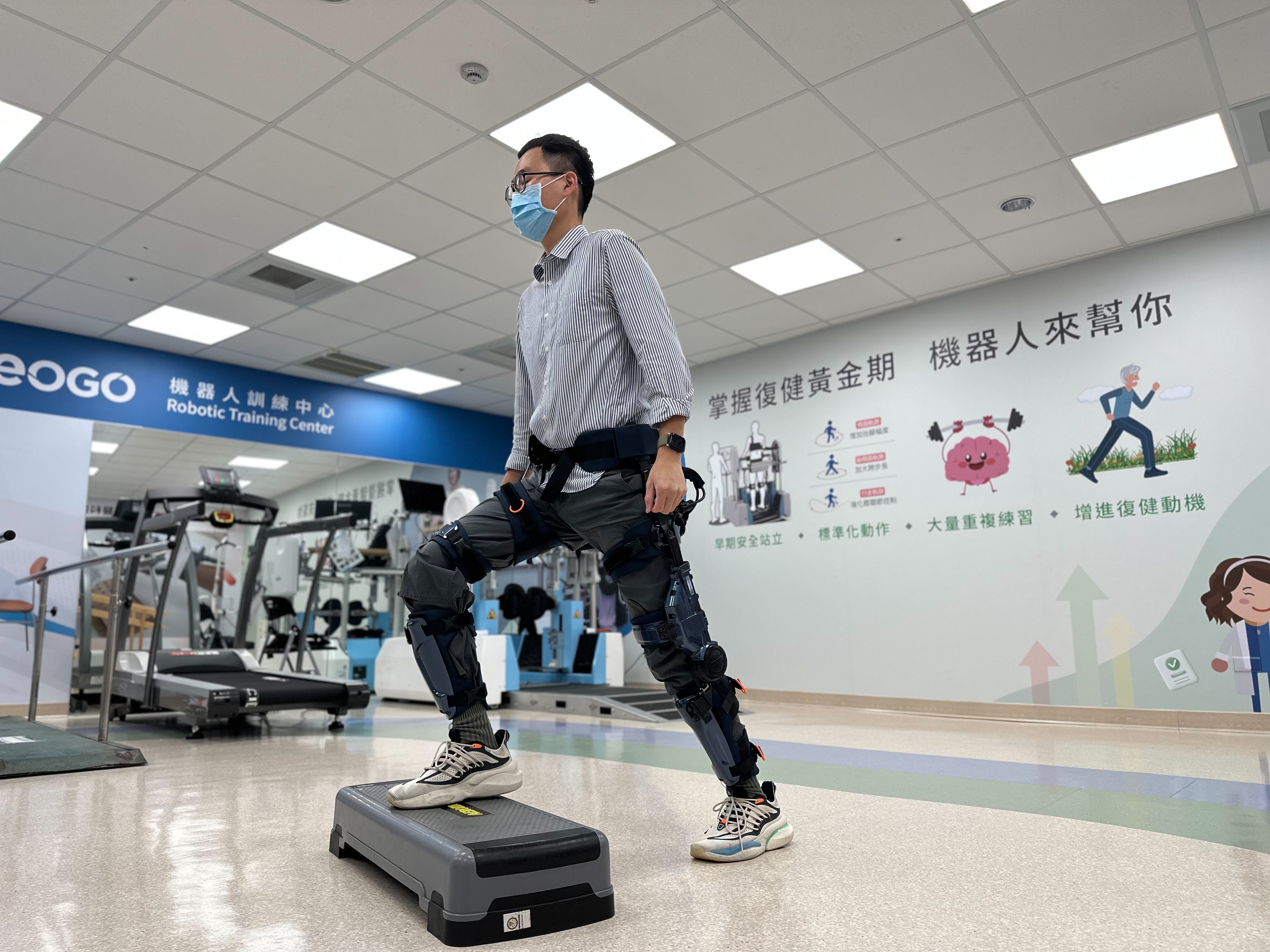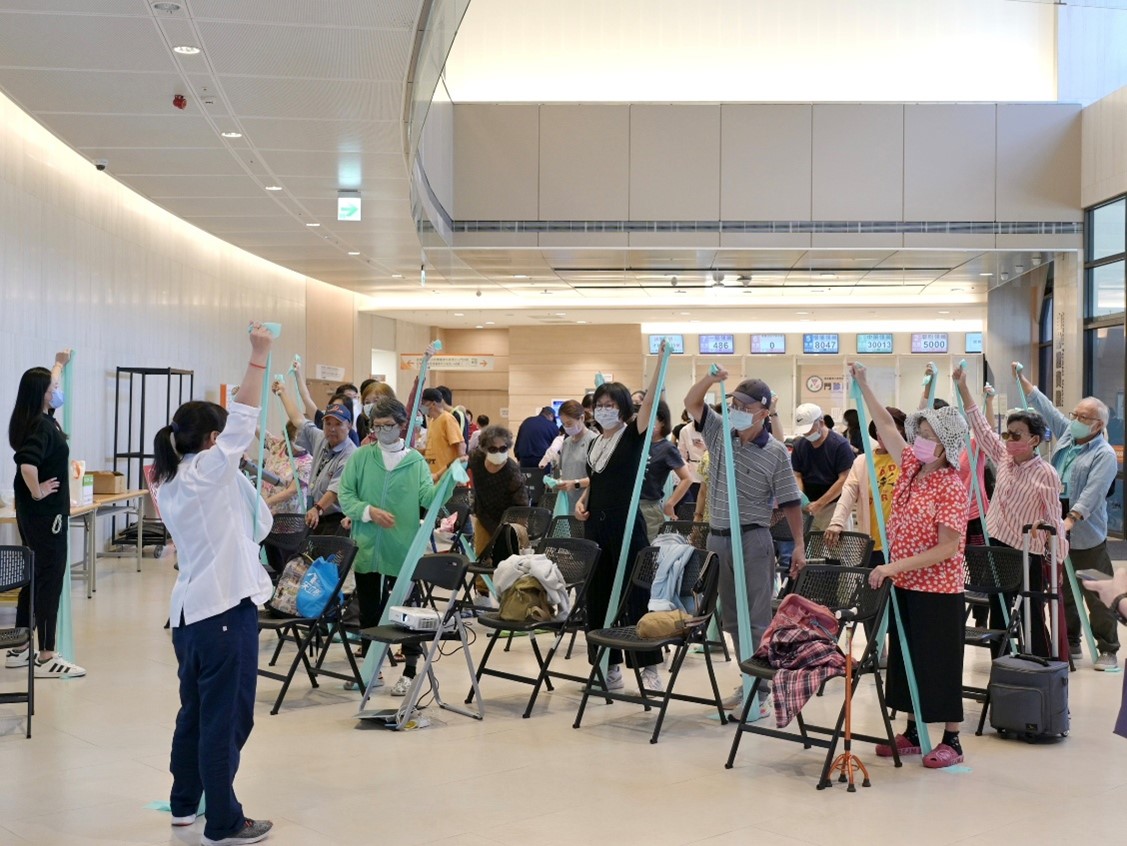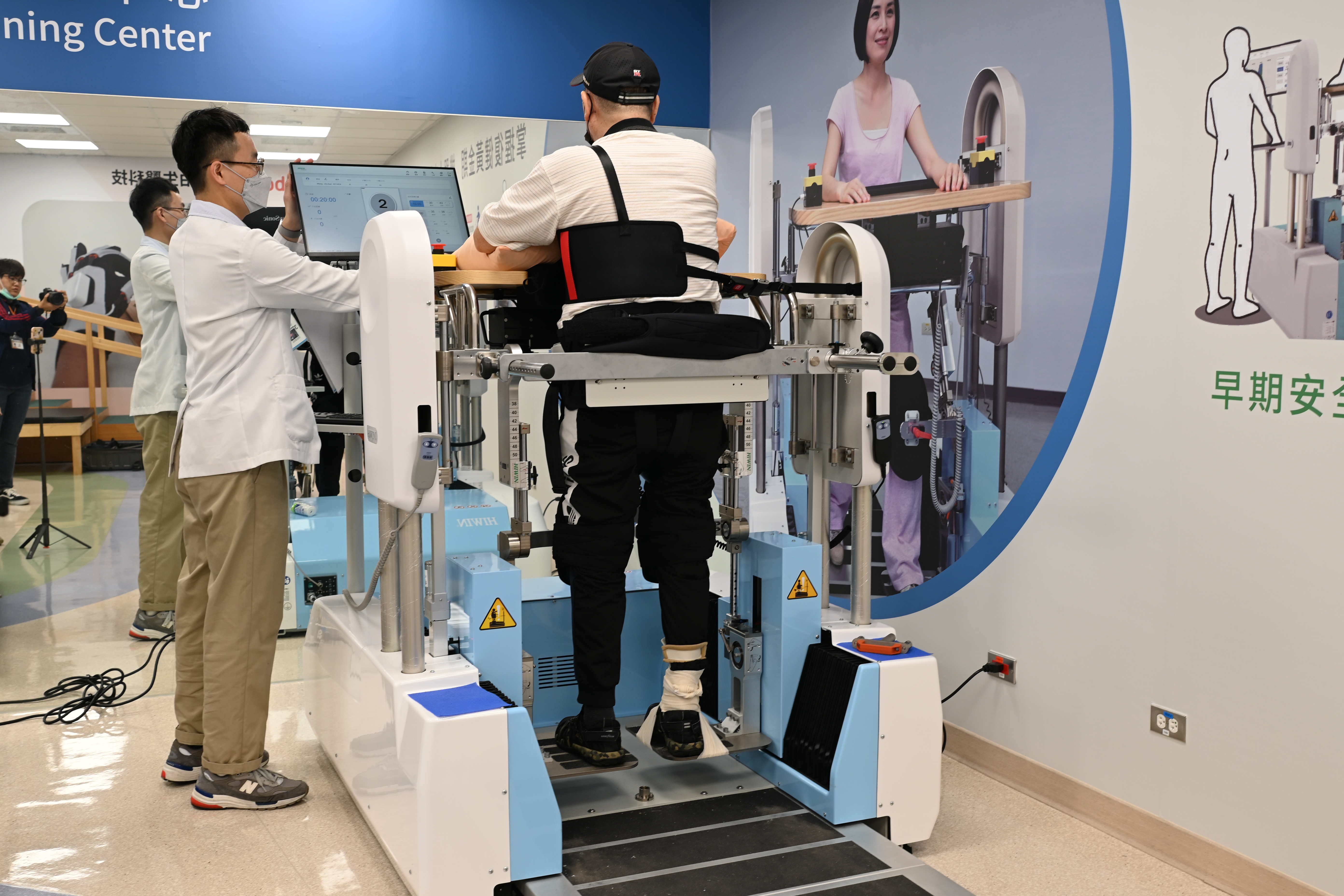
KMU Gangshan Hospital established the Intelligent Robotic Rehabilitation Center, utilizing sensor-based smart technology to enhance patients’ rehabilitation efficiency, confidence, and motivation.
Taiwan has officially entered a super-aged society. Research shows that the prevalence of frailty among Taiwanese adults aged 65 and above ranges from 5% to 17%, while pre-frailty affects 23% to 47%. Although these individuals may not suffer from severe disabilities, they often experience declining physical strength, unsteady gait, and a heightened risk of falls and disability. Focusing on frailty prevention and rehabilitation for older adults, KMU Gangshan Hospital hosted the “Silver Muscle Health Lecture” on August 20, where intelligent rehabilitation robots were also unveiled for the public to experience.
“Frailty is not a normal part of aging—it can be significantly slowed through proper nutrition and exercise,” said Dr. Huang Yi-Ching, Director of the Department of Rehabilitation. She explained that early warning signs of frailty include weight loss, weaker grip strength, and slower walking speed. Without timely intervention, these symptoms may progress into disability and loss of independence. Dr. Huang emphasized that seniors should increase protein intake and maintain regular muscle-strengthening and balance exercises to slow down muscle loss, prevent frailty, and preserve independent living.

A physical therapist at KMU Gangshan Hospital guides participants in a “standing exercise” session to help prevent early onset of frailty.
At the event, physical therapist Hsu Pei-Chin led participants in “standing exercises,” such as repeated chair rises, leg lifts, and single-leg standing. Elderly attendees participated enthusiastically, filling the venue with laughter. Hsu explained that many seniors feel increasingly weak not because of major illness but due to a lack of exercise. Simple standing exercises can strengthen muscles, improve balance, and reduce the risk of falls.
The hospital also unveiled its lower-limb rehabilitation robot at the newly established Intelligent Robotic Rehabilitation Center. Physical therapist Chen Hao noted that the device securely supports the waist, hips, and knees of mobility-impaired patients, allowing them to practice walking in a standing position. Equipped with spasm detection and other safety features, the robot enables stroke patients to begin gait training earlier. Its 20-minute sessions deliver at least five times the intensity of traditional training, offering repetitive lower-limb muscle and balance training that helps rebuild walking confidence.
One patient, a 66-year-old nicknamed “Mr. Chuan” (alias), had worked in the electrical and plumbing business for many years. After raising his children, he unfortunately suffered a stroke in his prime. Cognitive decline made him reluctant to participate in rehabilitation—often giving up after just five minutes of training. More than a year later, he still suffered from right-side paralysis and was unable to walk.
Chen shared that from March to May this year, Mr. Chuan completed 12 sessions of robotic rehabilitation training at KMU Gangshan Hospital. As a result, his balance, limb coordination, and muscle strength significantly improved. His upper body no longer leaned to one side, and he was able to walk short distances with family support. He continues to undergo rehabilitation, hoping to regain full mobility and enjoy a peaceful retirement with his wife.
KMU Gangshan Hospital unveiled its lower-limb rehabilitation robot, with a patient personally demonstrating rehabilitation progress.

